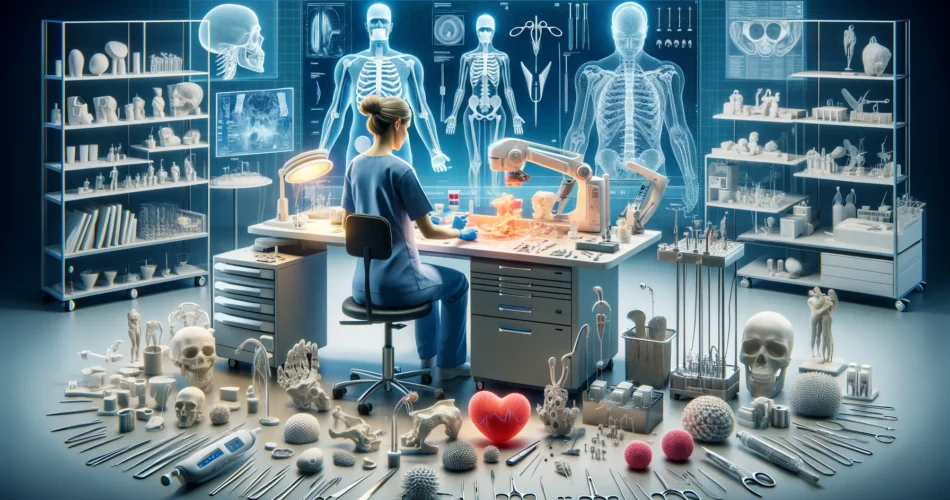In the rapidly evolving field of biomedical engineering, 3D printing emerges as a transformative force, reshaping the landscape of healthcare, surgical training, and patient-specific treatment solutions. Antonia Pontiki, a teaching fellow and biomedical engineer at King’s College London, sheds light on the remarkable journey of 3D printing from concept to application in medicine, proving it’s not all about robots but about saving lives and enhancing surgical precision.
Beyond the Realm of Imagination: 3D Printing in Medicine
3D printing, known for its versatility across various industries, has found a noble purpose in the realm of healthcare. This additive manufacturing technology, capable of turning digital models into tangible objects, is now at the forefront of medical innovation, offering unprecedented opportunities in surgical training, planning, and patient care.
Transforming Surgical Education and Planning
The use of 3D-printed anatomical models for surgical training and planning represents a significant leap forward in medical education. These models serve a dual purpose: enhancing the learning experience for medical students and providing clinicians with a precise understanding of complex cases before stepping into the operating room. Pontiki highlights the creation of lifelike organs, such as hearts and rib cages, which can be used to simulate surgical procedures, offering a realistic alternative to traditional methods like virtual reality simulations and cadaveric dissections.
Innovations in Patient-specific Treatments
The true potential of 3D printing in healthcare shines in the development of patient-specific implants and organ replicas. Through the meticulous process of image segmentation and 3D modeling, biomedical engineers can reconstruct parts of the human body, such as ribs and sternums, for individuals undergoing cancer resection surgeries. These 3D-printed templates are not merely plastic prototypes; they are the blueprints for creating biocompatible implants that are then used to restore the structural integrity of patients’ bodies, offering a new lease on life for those affected by cancer.
The Future of Bioprinting: A Vision of Organ Replication
While 3D printing of non-living implants marks a significant advancement, the horizon of bioprinting promises a future where fully functional organs can be created. This emerging technology, which combines a gel-like biomaterial with stem cells, has the potential to revolutionize organ transplantation. Although still in its infancy, bioprinting holds the promise of addressing the critical shortage of donor organs, opening the door to life-saving treatments for countless patients.
Shaping the Future of Surgical Training
The development of anthropomorphic models for surgical training signifies another groundbreaking application of 3D printing. These hyper-realistic simulators, replicating various parts of the human anatomy, are set to redefine how surgeons hone their skills. From thoracic surgery to procedures involving the vocal cords and esophagus, these models offer a practical and ethical approach to mastering surgical techniques, potentially reducing the reliance on animal models and enhancing patient safety.
Conclusion: A New Era of Healthcare Innovation
The integration of 3D printing into healthcare epitomizes the intersection of technology and medicine, where innovation meets compassion. As researchers and engineers like Antonia Pontiki continue to push the boundaries of what’s possible, the future of surgical training and patient-specific treatment grows increasingly bright. By harnessing the power of 3D printing, the medical community stands on the brink of a revolution that promises to improve surgical outcomes, personalize patient care, and ultimately, save lives.

